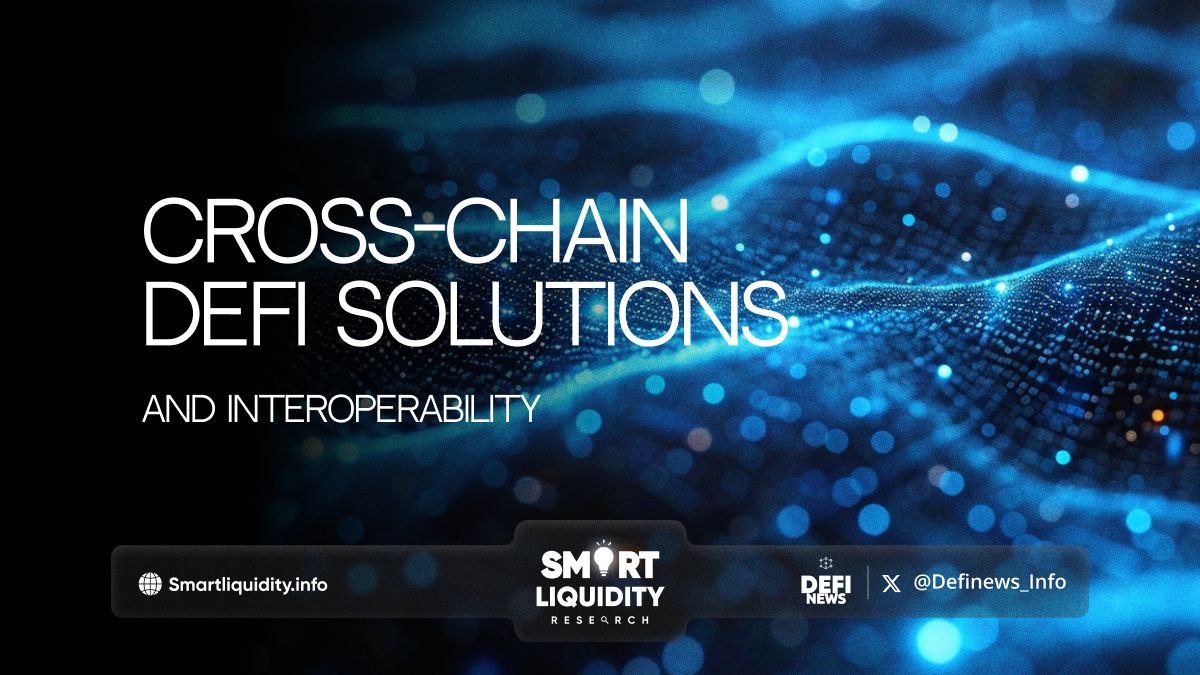Cross-Chain DeFi Solutions and Interoperability


As decentralized finance (DeFi) continues to grow, the demand for efficient, secure, and scalable solutions has never been higher. A significant aspect of this evolution is the development of cross-chain DeFi solutions and interoperability.
These technologies are pivotal in enabling seamless transactions and interactions across different blockchain networks, thereby enhancing the overall user experience and expanding the potential use cases of DeFi.
What Are Cross-Chain DeFi Solutions?
Cross-chain DeFi solutions refer to technologies and protocols that allow different blockchain networks to interact with one another. This interoperability is crucial because it breaks down the silos that currently exist within the blockchain ecosystem. Each blockchain has its unique features and capabilities, and cross-chain solutions enable users to leverage these features without being confined to a single network.
The Importance of Interoperability
Interoperability in DeFi is akin to the internet’s ability to connect disparate computer systems across the globe. Without interoperability, users would face significant limitations in transferring assets, and data or executing smart contracts across different platforms. This would severely hinder the growth and adoption of DeFi technologies.
Key Benefits
- Enhanced Liquidity
By connecting different blockchain networks, cross-chain solutions increase the liquidity pool available for DeFi applications. This leads to more efficient markets and better price discovery. - Improved User Experience
Users can interact with multiple blockchains through a single interface, simplifying the process of managing assets and executing transactions. - Expanded Use Cases
Cross-chain interoperability opens up new possibilities for DeFi applications, such as multi-chain yield farming, cross-chain lending, and decentralized exchanges (DEXs) that operate across multiple networks.
Leading Technologies and Protocols
Several technologies and protocols are at the forefront of enabling cross-chain interoperability:
- Atomic Swaps
These are smart contracts that enable the exchange of one cryptocurrency for another without the need for a trusted third party. Atomic swaps are crucial for decentralized trading across different blockchain networks. - Inter-Blockchain Communication (IBC)
Proposed by the Cosmos network, IBC is a protocol that facilitates communication between different blockchains. It allows the transfer of tokens and data across heterogeneous blockchains. - Polkadot’s Relay Chain
Polkadot utilizes a relay chain to achieve interoperability. The relay chain coordinates consensus and communication between various parachains, each of which can have its unique features and governance. - Blockchain Bridges
These are protocols that connect two or more blockchain networks, allowing for the transfer of assets and data. Examples include the Ethereum-Polygon bridge and the Binance Smart Chain bridge.
Challenges and Future Directions
Despite the significant progress, several challenges remain in achieving seamless cross-chain interoperability:
- Security
Ensuring the security of cross-chain transactions is paramount. Vulnerabilities in bridges or interoperability protocols can lead to significant financial losses. - Scalability
As more blockchains and users become interconnected, scalability issues may arise, requiring robust solutions to handle increased transaction volumes. - Standardization
The lack of standardization across different blockchain networks can hinder interoperability. Efforts are needed to create universal standards and protocols.
Looking ahead, the future of DeFi lies in the continued development and refinement of cross-chain solutions. As these technologies mature, we can expect a more interconnected and efficient blockchain ecosystem, driving further innovation and adoption in the DeFi space.
In conclusion, cross-chain DeFi solutions and interoperability are critical to the next phase of DeFi evolution. By breaking down the barriers between different blockchain networks, these technologies enhance liquidity, improve user experience, and expand the potential use cases of decentralized finance. As the industry continues to innovate, the vision of a fully interconnected and interoperable blockchain ecosystem becomes increasingly attainable.




